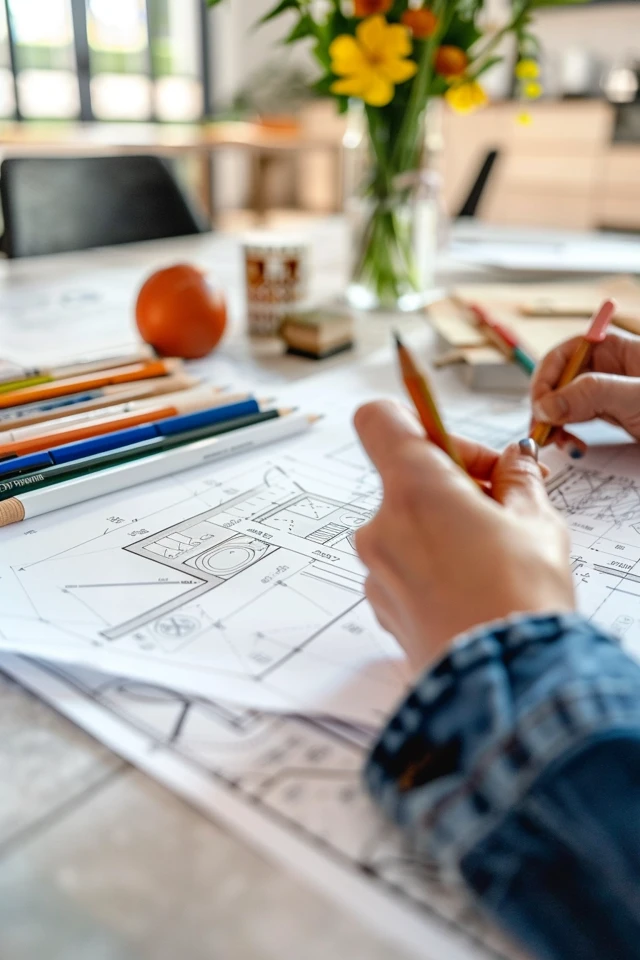Hello, my name is Alex and in this article, I will guide you on how to draw a sliding door on a floor plan using architectural sketching techniques. Drawing accurate floor plans is essential for architects and designers to communicate their ideas effectively. Including sliding doors in your floor plan can enhance the functionality and aesthetics of a space. So, let’s dive in and discover the step-by-step process of incorporating sliding doors into your floor plans!
Key Takeaways
- Drawing accurate floor plans is crucial for architectural projects.
- Sliding doors come in various types, including standard doors, bypass sliding doors, accordion folding doors, and pocket sliding glass doors.
- Consider the purpose of the space when choosing the type of sliding door.
- Remember to add dimensions, labels, and other relevant details to your floor plan to ensure clarity.
- Sliding doors are a popular choice in modern architecture due to their space-saving and aesthetic benefits.
Floor Plan Drawing Tips: Creating an Accurate Representation
Accurately drawing a floor plan is essential when working on architectural projects. To ensure precision, it’s important to follow certain floor plan drawing tips. According to the second source, here are some key steps to create an accurate floor plan:
- Gather the necessary tools: Start by gathering essential tools such as a laser measure or measuring tape, graph paper, a pencil with an eraser, and a clipboard. These tools will help you measure and sketch the floor plan accurately.
- Choose the right scale: Selecting the appropriate scale is vital for accurate representation. A common scale used in floor plans is 1:100. This scale allows you to accurately depict the proportion of each element in the drawing.
- Utilize grid paper: Grid paper with 5 mm increments can be used to ensure precise measurements. The grid lines will act as a guide when drawing the floor plan.
- Sketch the footprint: Begin by sketching the footprint of the property, focusing on the outer walls and doors. This will serve as the foundation of your floor plan.
- Measure and add dimensions: Measure each wall and add the dimensions to the drawing. This step is crucial in accurately representing the size and layout of the space. Don’t forget to include any permanent structures such as fireplaces or staircases.
- Label windows, doors, and room names: To ensure clarity and easy understanding, label all windows, doors, and room names on the floor plan. This will help viewers navigate the space effortlessly.
Taking these floor plan drawing tips into consideration will result in creating an accurate and professional-looking floor plan, providing an excellent foundation for your architectural projects.
Image: A well-drawn floor plan that showcases accurate measurements and clear labelling, showcasing the importance of following floor plan drawing tips.

The Future of Sliding Doors in Architecture
Sliding doors are not only a functional element in architectural design but also a growing trend that is shaping the future of contemporary spaces. As architects and designers cater to modern design preferences, sliding doors are evolving in exciting ways, offering new possibilities for both residential and commercial projects.
One of the emerging trends is the rise of frameless sliding doors, particularly for patios and balconies. These sleek, minimalist designs provide uninterrupted views and flood interiors with natural light, creating a seamless connection between indoor and outdoor spaces.
Technological advancements have also transformed the way sliding doors function. Automatic sensors can now detect movement and conveniently open or shut the doors as you approach, enhancing convenience and accessibility in everyday life.
Another innovative approach is the use of multi-panel sliding doors, which allow architects to blur the boundaries between indoor and outdoor living. By seamlessly merging these spaces, architects can create a sense of expansiveness and openness, providing a harmonious flow throughout the entire floor plan.
The future of sliding doors in architecture is marked by trends that focus on space-saving solutions and fluid design. As architects experiment with architectural sketching techniques and floor plan layout ideas, sliding doors will continue to be a key element in creating functional, aesthetically pleasing spaces that meet the evolving lifestyle needs of modern individuals.


